#Empire of Ethiopia
Explore tagged Tumblr posts
Text

Taytu Betul (1851 – 11 February 1918) was Empress of Ethiopia from 1889 to 1913 and the third wife of Emperor Menelik II. An influential figure in anti-colonial resistance during the late 19th-century Scramble for Africa, she, along with her husband, founded the modern Ethiopian capital Addis Ababa in 1886.
#Taytu Betul#women in history#african history#ethiopian history#Empire of Ethiopia#xix century#xx century#people#portrait#illustration#art#arte
8 notes
·
View notes
Text

Ethiopian coin depicting King Endubis of Axum. The ruling elite of Ethiopia at this time were typically bilingual capable of understanding both Greek and Ethiopic(Ge’ez). He reigned from 270 to 300 CE.
#endubis#ethiopia#african history#axum#axumite#axumite empire#art#culture#coin#currency#greek#ancient#ancient art#ancient history
78 notes
·
View notes
Text
Country flags now vs then Part 3
What countries do u want to see next? Tell me in the reply section or in the messages
#history#country flags#flags#geography#greece#mongolia#kazakhstan#ethiopia#mongol empire#kazakh history#mongol history#greek history#ethiopian history#my edit
3 notes
·
View notes
Text
The Kingdom of Aksum: A Powerful Empire of East Africa and South Arabia
The Kingdom of Aksum, also referred to as the Kingdom of Axum or the Aksumite Empire, held sway over a vast territory in East Africa and South Arabia from the era of Classical antiquity through the Middle Ages. Nestled in what is now Northern Ethiopia and Eritrea, the kingdom’s influence stretched across present-day Djibouti and Sudan, even extending into Southern Arabia during the rule of Kaleb,…

View On WordPress
#African History#Aksum#east african history#Ethiopia#Ethiopia history#Kingdom of Axum#the Aksumite Empire#The Kingdom of Aksum
2 notes
·
View notes
Text



Discover the long-forgotten history of Africa with this series of articles about the ancient kingdoms of the Black continent. Read the full article here:
https://beyondthetruth.net/african-heritage-the-kingdom-of-aksum/
2 notes
·
View notes
Text

The founding of the Ethiopian Empire in the 13th century by Yekuno Amlak
Yekuno Amlak, a member of the Amhara nobility, overthrew the Zagwe dynasty in 1270 and established the Solomonic dynasty, which ruled Ethiopia until 1974. The Solomonic dynasty claimed descent from King Solomon and the Queen of Sheba, and this claim was used to legitimize their rule.
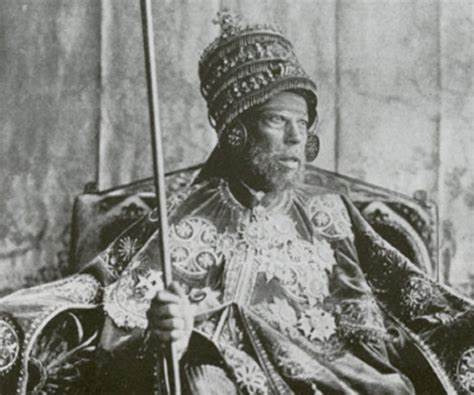
Yekuno Amlak was a powerful and charismatic leader, and he was able to unite the Ethiopian people against the Zagwe. He also established a strong central government and began to rebuild the Ethiopian army.
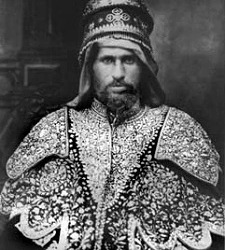
Under Yekuno Amlak's rule, the Ethiopian Empire began to expand. He conquered the Kingdom of Damot and the Kingdom of Ifat, and he also made alliances with the Muslim Sultanates of Ifat and Shewa.

Yekuno Amlak died in 1285, but his legacy would live on. He is remembered as the founder of the Solomonic dynasty and the one who restored Ethiopia to its former glory.
Here are some of Yekuno Amlak's accomplishments:
He overthrew the Zagwe dynasty and established the Solomonic dynasty.
He united the Ethiopian people against the Zagwe.
He established a strong central government.
He began to rebuild the Ethiopian army.
He conquered the Kingdom of Damot and the Kingdom of Ifat.
He made alliances with the Muslim Sultanates of Ifat and Shewa.
Here are some of the challenges that Yekuno Amlak faced:
The Zagwe dynasty was a powerful and established dynasty.
The Ethiopian people were divided and there was no central government.
The Ethiopian army was weak and in need of rebuilding.
The Muslim Sultanates of Ifat and Shewa were powerful and could pose a threat to Ethiopia.
Despite these challenges, Yekuno Amlak was able to overcome them and establish the Solomonic dynasty. He is remembered as a great leader and a key figure in Ethiopian history.
#The founding of the Ethiopian Empire in the 13th century by Yekuno Amlak#Yekuno Amlak#Ethiopia#solomonic dynasty#Zagwe Dynasty
7 notes
·
View notes
Text
Le donne del mio Vate – ☾ CVI ☽ 🖋️
Cap 15. L’ultimo D’Annunzio: L’Oro alla Patria (3) Nonostante la breve indecisione iniziale, mon Maître sostenne pienamente la guerra d’Etiopia.Come sapete, durante il regime fascista Gabriele, in questa specie di esilio al Vittoriale, ebbe alcuni momenti di frizione con il Duce, ma gli si avvicinò in occasione di quella guerra.L’invasione dell’Etiopia, uno Stato libero, e governato da un…

View On WordPress
#Africa.#conquest#D&039;Annunzio#donations#empire#Ethiopia#Fascism#gold#Haile Selassie#Latin#motto#Mussolini#propaganda#punishment#Vittoriale
0 notes
Text
Imperial Policies And Nationalism In The Decolonization Of Somaliland, 1954-1960
The 1897 #AngloEthiopian Treaty & the 1954 Anglo‐Ethiopian Agreement (under which one-third of #Somaliland – the Haud – was ceded to #Ethiopia) were central to the partition & colonization of SL; they were also crucial to the decolonization of the country.
Continue reading Untitled

View On WordPress
#Anglo-Ethiopian#British Colonialism#British empire#British Somaliland#British Somaliland Protectorate#Ethiopia#Haud and Reserve Area#Horn of Africa#Jama Mohamed#Somaliland#Sovereignty
0 notes
Text

They won’t teach you in school that in Ethiopia 1896, the Ethiopians trained Lions to capture the soldiers of the enemy and fought side by side with Cheetahs, bees, and lions.
Ethiopian soldiers with their fighting lions. The Ethiopians went to war with dangerous animals and insects such as bees, wasps, lions, or cheetahs trained to capture the soldiers of the enemy camp, which enabled them to win all the wars of colonization against them and to be the only country in the world to have never been colonized. At the battle of Adwa Ethiopian warriors skilled in sword fighting called Shotel destroyed the invading Italian soldiers in hand-to-hand combat.
The Battle of Adwa was the climactic battle of the First Italo-Ethiopian War. The Ethiopian forces defeated the Italian invading force on Sunday 1 March 1896, near the town of Adwa. The decisive victory thwarted the campaign of the Kingdom of Italy to expand its colonial empire in the Horn of Africa.
The Ethiopians surrounded the Italians for two weeks and, upon Empress Tayitu's advice, cut off the fort's water supply. The Italian commander agreed to surrender if they would be allowed to leave with their firearms. Menelik agreed that they could leave the garrison unharmed.
429 notes
·
View notes
Photo

Kingdom of Abyssinia
The Kingdom of Abyssinia was founded in the 13th century CE and, transforming itself into the Ethiopian Empire via a series of military conquests, lasted until the 20th century CE. It was established by the kings of the Solomonid dynasty who, claiming descent from no less a figure than the Bible's King Solomon, would rule in an unbroken line throughout the state's long history. A Christian kingdom which spread the faith via military conquest and the establishment of churches and monasteries, its greatest threat came from the Muslim trading states of East Africa and southern Arabia and the migration of the Oromo people from the south. The combination of its rich Christian heritage, the cult of its emperors, and the geographical obstacles presented to invaders meant that the Ethiopian Empire would be one of only two African states never to be formally colonised by a European power.
Origins: Axum
The Ethiopian Highlands, with their reliable annual monsoon rainfall and fertile soil, had been successfully inhabited since the Stone Age. Agriculture and trade with Egypt, southern Arabia, and other African peoples ensured the rise of the powerful kingdom of Axum (also Aksum), which was founded in the 1st century CE. Flourishing from the 3rd to 6th century CE, and then surviving as a much smaller political entity into the 8th century CE, the Kingdom of Axum was the first sub-Saharan African state to officially adopt Christianity, c. 350 CE. Axum also created its own script, Ge'ez, which is still in use in Ethiopia today.
Across this Christian kingdom, churches were built, monasteries founded, and translations made of the Bible. The most important church was at Axum, the Church of Maryam Tsion, which, according to later Ethiopian medieval texts, housed the Ark of the Covenant. The Ark, meant to contain the original stone tablets of the Ten Commandments given by God to Moses, is supposed to be still there, but as nobody is ever allowed to see it, confirmation of its existence is difficult to achieve. The most important monastery in the Axum kingdom was at Debre Damo, founded by the 5th-century CE Byzantine ascetic Saint Aregawi, one of the celebrated Nine Saints who worked to spread Christianity in the region by establishing monasteries. The success of these endeavours meant that Christianity would continue to be practised in Ethiopia right into the 21st century CE.
The kingdom of Axum went into decline from the late 6th century CE, perhaps due to overuse of agricultural land, the incursion of western Bedja herders, and the increased competition for the Red Sea trade networks from Arab Muslims. The heartland of the Axum state shifted southwards while the city of Axum fared better than its namesake kingdom and has never lost its religious significance. In the 8th century CE, the Axumite port of Adulis was destroyed and the kingdom lost control of regional trade to the Muslims. It was the end of the state but not the culture.
Continue reading...
159 notes
·
View notes
Text
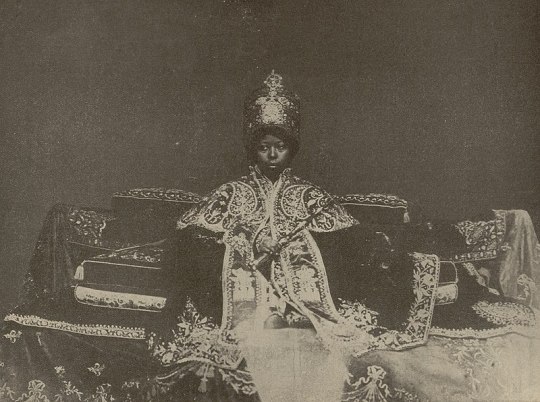
Zewditu (Askala Maryam; 29 April 1876 – 2 April 1930) was Empress of Ethiopia from 1916 to 1930. The first female head of an internationally recognized country in Africa in the 19th and 20th centuries, and the first and only empress regnant of the Ethiopian Empire, her reign was noted for the reforms of her Regent and designated heir Ras Tafari Makonnen (who succeeded her as Emperor Haile Selassie I), about which she was at best ambivalent and often stridently opposed, due to her staunch conservatism and strong religious devotion. She is the most recent empress regnant, as well as the last female Ethiopian head of state until the 2018 election of Sahle-Work Zewde as president.
#Zewditu of Ethiopia#Askala Maryam#women in history#african history#ethiopian history#Empire of Ethiopia#xix century#xx century#people#portrait#photo#photography#black and white
3 notes
·
View notes
Text

Prayer Book: Arganonä Maryam (The Organ of Mary)
Ethiopian. 17th Century. Credited to Baselyos.
The Metropolitan Museum of Art. New York.
#Prayer Book: Arganonä Maryam (The Organ of Mary)#art#culture#literature#ethiopian#ethiopia#african history#early modern period#early modern history#aksum#axumite empire#the metropolitan#the met#the metropolitan museum of art#Baselyos
2 notes
·
View notes
Text
Menelik II, The Visionary Emperor of Ethiopia: A Legacy of Expansion and Modernization
Menelik II, also known as Sahle Maryam, was a pivotal figure in Ethiopian history, leaving an indelible mark on the nation through his ambitious leadership and far-reaching accomplishments. Born in 1844 in Angolalla, Menelik was the son of the Shewan king, Negus Haile Melekot, and Ejigayehu Lemma Adyamo, a palace servant girl. His early years were shaped by both privilege and adversity, as his…

View On WordPress
#African History#East African#east african history#Emperor of Ethiopia#Ethiopia history#Ethiopian crown!#Ethiopian history#First Italo-Ethiopian War#King of Shewa#Menelik II#The Ethiopian Empire
0 notes
Text
Standing in solidarity with Ethiopia, African Americans responded to the Second Italo-Ethiopian War, mobilizing support, raising awareness, and championing the cause of freedom against colonial oppression. African Americans have enough battles of their own to fight everyday on American soil in the midst of the Great Depression and an enduring Jim Crow era but news has just come from Africa. The continent’s only remaining nation to avoid colonization in Europe’s Scramble for Africa, has just been invaded by Benito Mussolini. And more than seven thousand miles away, in a historic display of Pan-Africanism and Black Nationalism that took place across the United States, this was the Black American community drafting itself to defend the Empire of Ethiopia when no one else would.
.
.
.
——
#panafrikan #africanhistory #everydayafrica #africancreatives #representationmatters #Moyoafrika

#african#afrakan#kemetic dreams#africans#brownskin#brown skin#afrakans#african culture#Ethiopian#ethiopia#epic video
158 notes
·
View notes
Text
(Ethiopia, South West Ethiopia People's Region)
Among many of the Cushite and Omotic speaking tribes, it was traditional for men to carry the children. Attempts to suppress this practice were made during the Italian occupation and the post-war Ethiopian Empire, but were largely unsuccessful. Some anthropologists have associated the practice of male pregnancy with the early spread of agriculture. It level-loads child rearing, with the men undergoing pregnancy while the women nurse infants, increasing the fertility rates. Likewise, the suppression of the practice has been linked to reducing overpopulation or increasing the percentage of men capable of going to war at any given time.
#mpreg#mpreg ai#mpreg video#mpreg ai video#male pregnancy#pregnant man#pregnant men#mpreg indigenous#mpreg lore
71 notes
·
View notes
Text
Roughly 10 Cool Historical Queer Figures More People Should Know About
Part 1 - From Ancient Era to Early Modern Era
In spirit of Pride Month here's some snippets of queer history I think are interesting.
I've been working on a series of deep dives into interesting historical queer figures, but I haven't had the time to continue my list after the first entry about Julie d'Aubigny. I do want to continue with it, but I came to the realization that I will never have to time to do all the cool and interesting figures in depth, since there's too many, so I decided to do a list with brief descriptions about some of my favorite figures who are not that well known. Some of them are more well-known than others but I think they all deserve more acknowledgement.
I was able to trim down the number of figures to (roughly) 20, which was still too many for one post, so it's two posts now. They are in chronological order, so this part is set mostly before Victorian Era and the second part will be from Victorian Era onward.
This list is centered around western history (but not exclusively) because that's the history I'm most familiar with, though it's definitely not all white, since western history is not all white. I will be avoiding using modern labels, since they are rarely exactly applicable to history, rather I will present whatever we know about these figures' gender, sexuality and relationships. If there's information about what language they used about themselves, I will use that. Often we don't know their own thoughts, so I will need to do some educated guess work, but I will lean towards ambiguity whenever evidence is particularly unclear. If you are the type of person who gets angry with the mere suggestion there's a possibility that a historical gnc person might not have been cis, I encourage you to read my answers to related asks (here and here) first before sending me another identical ask. Try to at least bring some new arguments if you decide to waste my time with your trans erasure.
1. Khnumhotep and Niankhkhnum (latter half of 2400 BCE)

Khnumhotep and Niankhkhnum were ancient Egyptian royal servants, and possibly the first recorded gay couple in history known by name. They shared the title of Overseer of the Manicurists in the Palace of King Nyuserre Ini. They both had a wife and children, but they (along with their families) were buried together in a tomb. The tomb decorations show them similarly as other afterlife couples.
2. Marinos the Monk (c. 5th-8th century)
Marinos the Monk was born as Marina somewhere in eastern parts of Byzantine Empire, likely in the Levant. He was from a wealthy Christian family, possibly Coptic. Assigned female at birth his widowed father planned to marry him off and go to a monastery himself, but he convinced his father to take him with him dressed as a boy named Marinos. His father agreed and they were accepted as monks. After his father died many years later, he continued his life as a male presenting monk. Later he was accused of fathering an illegitimate child with a daughter of an innkeeper, which was not possible, but he didn't revoke the accusations, instead he begged for the abbot's forgiveness for "his sins". Marinos was banished from the monastery and became a beggar. For 10 years he raised his alleged illegitimate child as a father, until he was allowed to return to the monastery and do penance. Only after his death the abbot and the monks discovered his genitals and his inability to father children and were distraught for punishing an innocent man for 10 long years. The real father was discovered and along with the innkeeper and his daughter they all came to honor Marinos' grave and ask his forgiveness. He was canonized as a saint for his sacrificial selflessness, modesty and humility and honored across the Mediterranean from Ethiopia to France.
3. Mubārak and Muẓaffar al-Saqlabi (c. 10th - 11th century)
Mubārak and Muẓaffar were co-rulers of Taifa of Valencia in Muslim Spain. Al-Saqlabi means literally "of the Slavs", which in Al-Andalus was a general term for enslaved northern Europeans, as the two had been enslaved as children. They were in the service of another al-Saqlabi, a chief of police, and they worked they way up as civil servants till a local military coup in 1010, which resulted in them becoming the emirs of Taifa of Valencia. English language sources often describe them as "brothers" and "eunuchs", which gives the "historical gal pals" trope a concerning twist, but contemporary Muslim sources wrote fawningly about their passionate love, trust based on equality and mutual devotion. There was a popular genre of homoerotic poetry in the Islamic world at the time and poems in that genre were written about celebrating Mubārak and Muẓaffar's relationship. In 1018 Mubārak was killed in a riding accident and Muẓaffar shortly after in an uprising.
4. Eleno de Céspedes (1545 – died after 1589)
CW: genital inspection
Eleno was born in Andalusia, Spain, to an enslaved black Muslim woman and to a free Castillian peasant. He was assigned female at birth, given name Elena, and branded as a mulatto born to a slave. She was freed as a child and married to a stonemason at 15-16 years old. When pregnant, her husband left her and died a while later. Later Eleno testified that his intersex condition became externally visible, while he gave birth, and he became a man. He left his son to be raised by a friend and traveled around Spain. After he stabbed a pimp and ended up in jail, he started presenting as a man and openly courting women. Eventually he taught himself to be a surgeon with the help of a surgeon friend.
When he married María del Caño, his maleness was questioned and he was subjected to genital inspection multiple times and it was agreed by doctors that he had definitely male genitals, possibly also female genitals. After a year of marriage the couple was accused of sodomy. Eleno was tried by the Spanish Inquisition and subjected to more genital inspections, during which no penis was found. He claimed that his penis had been amputated after an injury. He defended himself in the trial by arguing that his intersex condition was natural and he had become a man after his pregnancy, so his marriage was legal. He was sentenced only for bigamy, since he had not confirmed that his husband was dead and punished as a male bigamist with 200 lashes and 10 years of public service to care for the poor in a public hospital. His fame attracted a lot of people wanting to be healed by him, which which was very embarrasing for the hospital so he was sent away and eventually exonerated from his charges.
7. Chevaliére d'Éon (1728-1810)

Charles d'Éon de Beaumont was born to a poor French noble family. In their 20s they became a government official and at 28 they joined the secret spy network of the king, Secret du Roi. They became a diplomat first in Russia and later in Britain while they used their position to spy for the king. Rumors circulated in London that they were secretly a woman. While in London they had a falling out with the French ambassador, accused him of attempted murder and published secret diplomatic correspondence. They were instead accused of libel and went into hiding. After the death of Louis XV in 1774 and the abolishment of Secret du Roi, d'Éon negotiated with the French government of the end of their exile in exchange for the rest of the secret documents he possessed. D'Éon took the name Charlotte, claimed she was in fact a cis woman - she had pretended to be man since a child so she could get the inheritance - and demanded the government to recognize her as such. When the king agreed and included funds for women's wardrobe, she agreed and returned to France in 1777. After that she helped rebels in the American War of Indepence - was not allowed to ]go and fight too, ghostwrote her not super reliable memoir, offered to lead a division of female soldiers against the Hasburgs in 1792 - was for some reason denied, attended fencing tournaments till 65 years old and settled down for the rest of her years with a widow, Mrs. Cole. After her death a surgeon reported that she had male primary sex characteristics, but fairly feminine secondary sex characteristics, like round breasts, which might suggest she had hormonal difference/was intersex in some way.
8. Public Universal Friend (1752-1819)
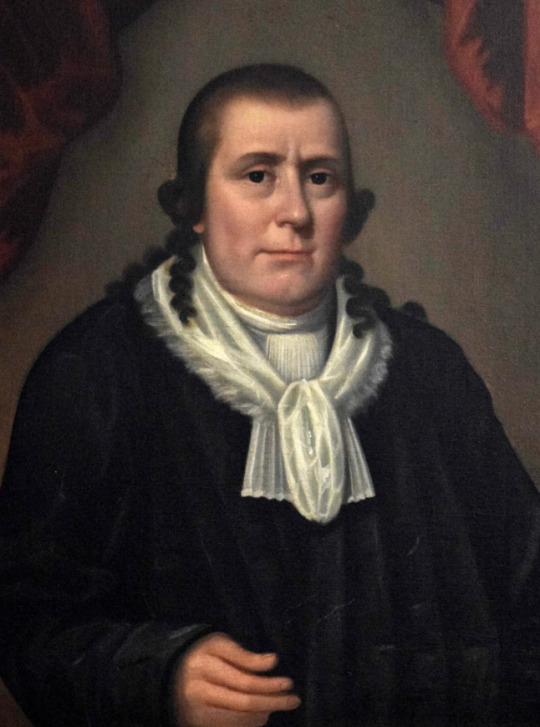
Public Universal Friend, or The Friend or PUF, was born as Jemima Wilkinson to Quaker parents in Rhodes Island, USA. Jemima contracted a disease in 1776, gained intense fever and almost died. The Friend claimed that she did die and God sent the Friend to occupy her body. The Friend didn't identify as man or a woman, and when asked about the Friend's gender, the Friend said "I am that I am". The Friend didn't want any gendered pronouns or gendered language to be used about the Friend. The Friend's pronouns, according to the writings of the Friend's followers, were "the Friend", "PUF" and possibly he. First recorded neo-pronouns perhaps? The Friend also dressed in androgynous/masculine manner.
The Friend started a bit cultish religious society disavowed by mainstream Quakers, The Society of Universal Friends, which I can only describe as chaotic good. The Friend first predicted a Day of Judgement would come in 1780 and when 1780 came and went, the Friend decided it was New England's Dark Day in 1780 and they had survived survived the Judgement Day so all was good then. The Friend preached for gender equality, free will, universal salvation (Jesus saved everyone and no one will go to hell) and abolition of slavery. The Friend persuaded any followers to free their slaves, which is probably the most chaotic good thing a potential cult leader can do with their influence over their followers, and several freed black people followed the Friend too. The Friend advocated for celibacy and was unfavorable towards marriage, but didn't think celibacy or rejection of marriage were necessary for everyone else, so it feels more like a personal preference. Many young unmarried women followed the Friend and some of them formed Faithful Sisterhood and took leadership positions among the Society.
The Society of Universal Friends tried to form a town for themselves around mid-1780s, till in 1799 the Friend was accused of blasphemy. The Friend successfully escaped the law two times. First the Friend, a skilled rider (what's a gender neutral version of horse girl?), escaped with a horse, then after an officer and an assistant tried to arrest the Friend at home, women of the house drove the men away. Third time 30 men surrounded the Friend's home at night, but a doctor convinced them that the Friend was in too poor health to move but would agree to appear at court. The Friend was cleared for all charges and even allowed to preach at the court.
9. Mary Jones (early 1800s–1853)
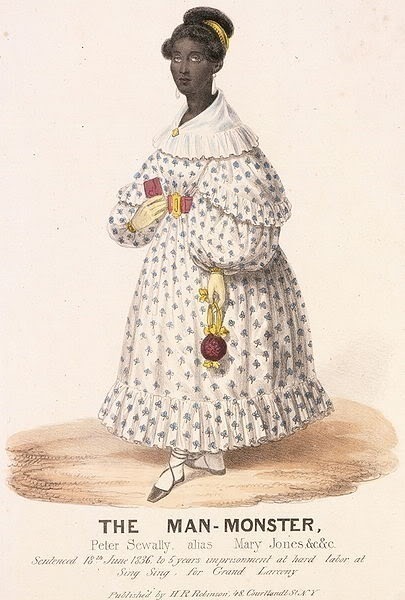
Mary Jones' origin is unknown, but she was an adult in 1836 in New York, USA. She was a free Black person, who preferred to present as a woman. She was sex worker by trade and used a prosthetic vagina. As a side hustle she would steel her customer's wallets, and usually they wouldn't tell anyone because it was 1830s and inter-racial sex and prostitution were illegal and everyone was repressed. Smart. Get your coin, girl. However after one of her more shameless customers discovered his wallet with 99 dollars inside had been replaced with a different man's empty wallet and contacted the police, she was arrested. The police discovered she had male genitals and when they searched her room they found several more stolen wallets. She appeared in court in her female presentation and when asked about her dress, she said that prostitutes she had worked with encouraged her to dress in women's clothing and said she looked better in them. They were right and she had since presented as a woman in her evening profession and among other Black people. She was convicted for grand larceny and sentenced to 5 years in prison. Later she continued to present as a woman and practice sex work, for which she was arrested for two more times.
10. George Sand (1804-1876)
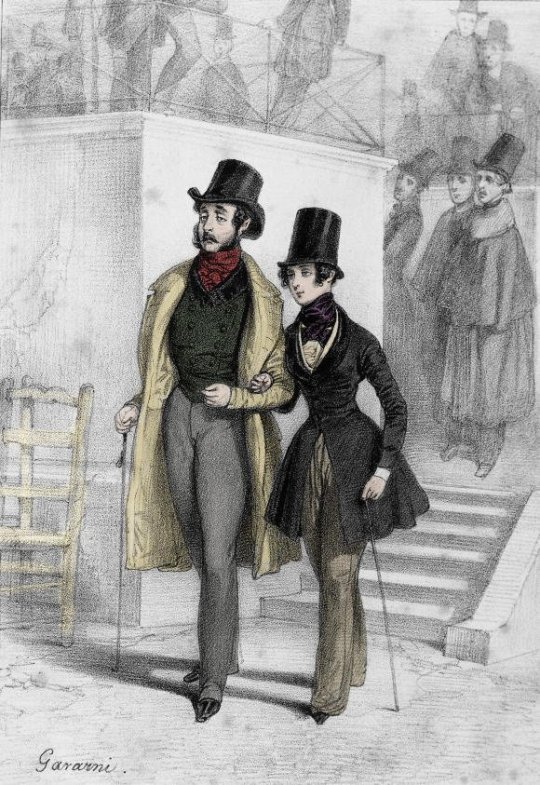
George Sand was pen name of Amantine Lucile Aurore Dupin de Francueil, a French Romantic writer. Amantine was high-born with a countess as a grandmother. George wrote about themself with alternating masculine and feminine language, using feminine language when talking about his childhood, but masculine language often other times. Their friends also used both masculine and feminine terms about them. Victor Hugo for example said about them: "George Sand cannot determine whether she is male or female. I entertain a high regard for all my colleagues, but it is not my place to decide whether she is my sister or my brother." George preferred men's clothing in public, which was illegal for those seen as women without a permit, but they didn't ask for permissions. They alternated between masculine and feminine presentations. They were outspoken feminist, critic of the institution of marriage, committed republican and supporter of worker's rights. They were married at age 18, had two children and left their husband in 1831, but legally separated from him in 1835. They had many affairs with men and some with women, at least with actress Marie Dorval. Their most notable relationship was with Frédéric Chopin, but they fell out before Chopin's death.
#i will be absolutely writing in depth posts about some of these figures#the friend is 100% one of those i fucking love the friend that story is a gift that keeps giving#history#queer history#pride month#queer#lgbtq history#queer tag#trans history#gay history#sapphic history#lesbian history#intersex history
232 notes
·
View notes